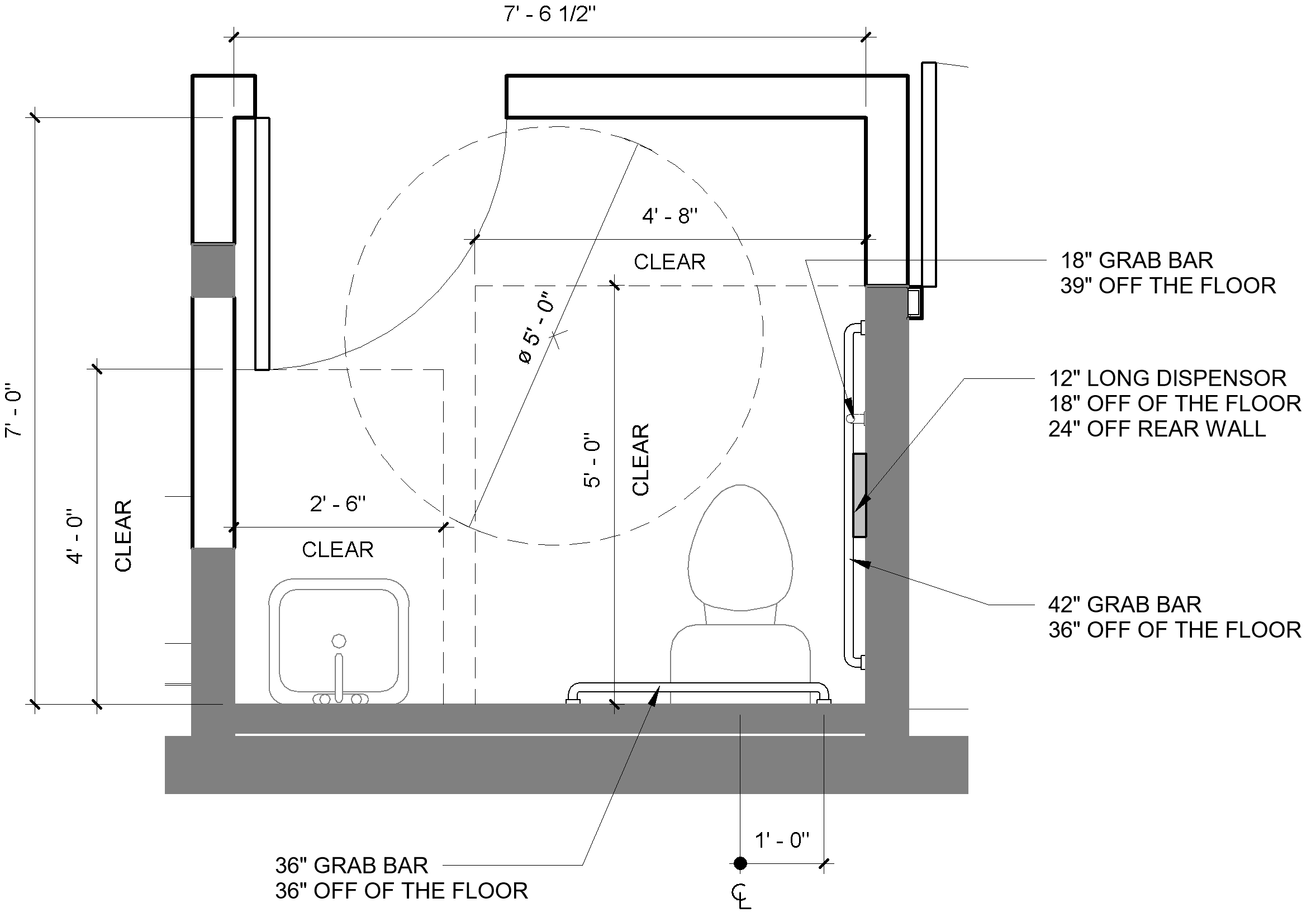Design of Handicap Bathrooms
I’m currently working on a restaurant for a client and one of the items we have to cover in a project like this (or any project) is the bathroom. The building code has a chart that determines the number of men and women’s bathrooms there are, and how many toilets and sinks are required in each bathroom. Smaller restaurants will have a single bathroom for each sex with a sink in it. As the size of the restaurant gets bigger the bigger each bathroom then becomes.
Another requirement for any bathroom is that at least one toilet and sink be handicap accessible. What this means is that the plumbing fixtures are required to have enough room around it for a person in a wheelchair to be able to maneuver around and use the fixture on their own. This is addressed by having enough clear floor space around a fixture, along with grab bars at a toilet or special faucet controls at the sink. There are also other requirements for the location of items like the toilet and paper towel holders, heights of sinks, and the location and angle of the mirror above the sink, among others.
The clear floor areas around a fixture depends on the fixture itself. In the case of a toilet, a person in a wheelchair should be able to roll up to the toilet and then be able to reach the grab bars at the side and back wall of the toilet. This is in order to move themselves from the wheelchair to the toilet. Once finished they then can use the grab bars again to move them from the toilet back to the wheelchair. In order to do this the grab bars must be located at a specific location, along with being a certain length so an individual can grab the bars coming in and then also when they leave.
The clear floor space at the toilet must also have enough area for someone in a wheelchair to be able to then turn around to then leave. The design of any space for a wheelchair should not force someone to have to back up in order to enter or exit a space. This not only is true for an individual room, but also for a toilet stall in a larger bathroom.
Clear space around a toilet in a recently completed project
Similar to the toilet, a sink has a number of clearances so someone in a wheelchair can approach and use it. The door into a bathroom has required clearances as well, so someone can approach the door and open it. There are even clearances on the other side of the door so someone can close and open the door from the inside.
Now back to my current project. The space has an existing bathroom, but it is not big enough for all the clearances required for a handicap bathroom. Luckily the existing bathroom is wide enough but needed to be two feet deeper to satisfy all the clearances needed in the room. In our case the one wall will be removed and then the new walls will be framed to make the bathroom the correct size.
Restaurant project bathroom with clear areas shown. White walls are the new walls added to make the bathroom comply with the code.
One final item to note, in larger bathrooms not all toilet stalls need to be handicap accessible. The code will state that a second, third, or more stalls are required once a bathroom reaches a certain size. Larger bathrooms are also required to provide a stall that is ambulatory accessible, which is for someone with crutches or a cane. These usually are close to the same size as a regular stall but have grab bars on each side.
Due to these requirements the size of a bathroom can quickly take up a large amount space in a building. I have had many experiences where the balance between how many people the building design wants to serve starts to be revised due to the size of the bathroom this number of people are creating. It becomes a fine balance between the function of the space and the functional aspects of spaces that support the occupants in the space.


